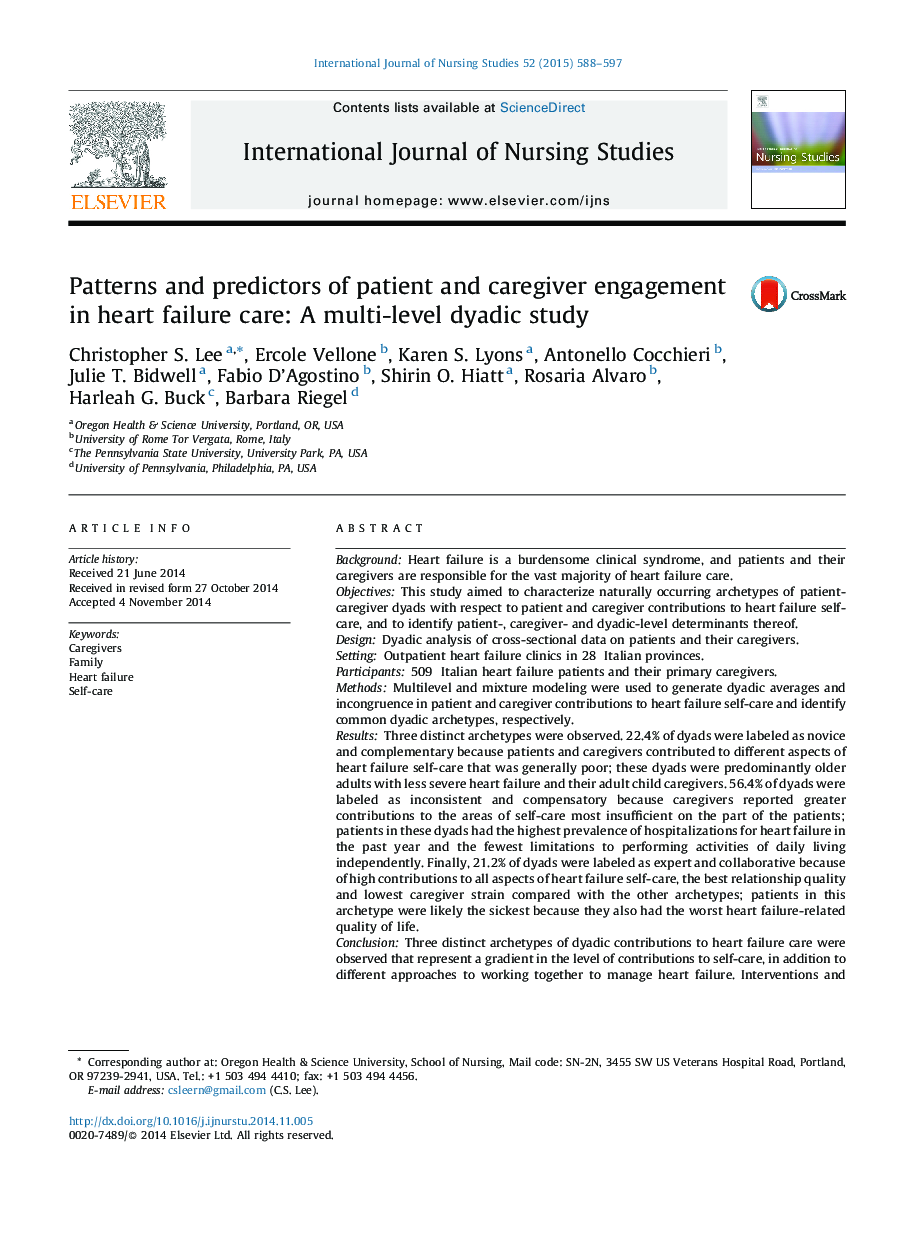| کد مقاله | کد نشریه | سال انتشار | مقاله انگلیسی | نسخه تمام متن |
|---|---|---|---|---|
| 1076333 | 1486527 | 2015 | 10 صفحه PDF | دانلود رایگان |
BackgroundHeart failure is a burdensome clinical syndrome, and patients and their caregivers are responsible for the vast majority of heart failure care.ObjectivesThis study aimed to characterize naturally occurring archetypes of patient-caregiver dyads with respect to patient and caregiver contributions to heart failure self-care, and to identify patient-, caregiver- and dyadic-level determinants thereof.DesignDyadic analysis of cross-sectional data on patients and their caregivers.SettingOutpatient heart failure clinics in 28 Italian provinces.Participants509 Italian heart failure patients and their primary caregivers.MethodsMultilevel and mixture modeling were used to generate dyadic averages and incongruence in patient and caregiver contributions to heart failure self-care and identify common dyadic archetypes, respectively.ResultsThree distinct archetypes were observed. 22.4% of dyads were labeled as novice and complementary because patients and caregivers contributed to different aspects of heart failure self-care that was generally poor; these dyads were predominantly older adults with less severe heart failure and their adult child caregivers. 56.4% of dyads were labeled as inconsistent and compensatory because caregivers reported greater contributions to the areas of self-care most insufficient on the part of the patients; patients in these dyads had the highest prevalence of hospitalizations for heart failure in the past year and the fewest limitations to performing activities of daily living independently. Finally, 21.2% of dyads were labeled as expert and collaborative because of high contributions to all aspects of heart failure self-care, the best relationship quality and lowest caregiver strain compared with the other archetypes; patients in this archetype were likely the sickest because they also had the worst heart failure-related quality of life.ConclusionThree distinct archetypes of dyadic contributions to heart failure care were observed that represent a gradient in the level of contributions to self-care, in addition to different approaches to working together to manage heart failure. Interventions and clinical programs that involve heart failure dyads should tailor strategies to take into consideration these distinct archetypes and their attributes.
Journal: International Journal of Nursing Studies - Volume 52, Issue 2, February 2015, Pages 588–597
